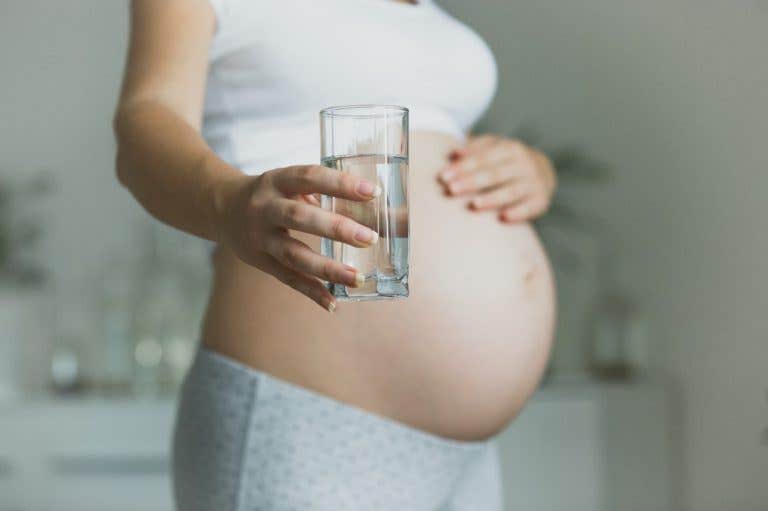Study finds alarming safety concerns in tap water for pregnant women
New research shows even small amounts of nitrate in drinking water may raise the risk of preterm birth and low birth weight.

Low nitrate levels in drinking water may raise risks of preterm birth and low birth weight, new research suggests. (CREDIT: Shutterstock)
Nitrate is a compound that often ends up in drinking water through fertilizer runoff. Farmers use nitrate-rich fertilizers to grow crops. When it rains, the excess nitrate seeps into groundwater and flows into drinking water systems. Although nitrate occurs naturally in soil and water, modern farming practices have caused its levels to rise dramatically over time.
In 1992, the U.S. Environmental Protection Agency (EPA) set a limit of 10 milligrams per liter (mg/L) for nitrate in drinking water. That standard aimed to protect the public from a serious condition called methemoglobinemia, or "blue baby syndrome," which limits the blood’s ability to carry oxygen. However, new research suggests this limit may not go far enough to protect pregnant people and their unborn children.
New Study Finds Increased Risks Below EPA Limits
A recent study, published in PLOS Water, reveals that even very low levels of nitrate may increase the risk of preterm birth and low birth weight. Dr. Jason Semprini, a health sciences researcher, led the investigation using historical data from Iowa. The study analyzed 357,741 births in the state between 1970 and 1988.
The researchers linked each birth to nitrate levels in the county’s water supply within 30 days of conception. They measured nitrate exposure both as a continuous scale and through four separate thresholds: greater than 0.0 mg/L, 0.1 mg/L, 5 mg/L, and 10 mg/L.
The results surprised many. Early prenatal exposure to just over 0.1 mg/L nitrate—only 1% of the current EPA limit—was linked to a 0.66 percentage point increase in preterm birth risk. Exposure above 5 mg/L was tied to a 0.33 percentage point increase in low birth weight risk. Surprisingly, exposure beyond the 10 mg/L limit—the threshold considered dangerous by federal standards—did not raise the risk any further. The harm seems to happen even at levels considered safe.
Why This Matters for Birth Outcomes
Gestational age and birth weight play a major role in a baby's health. Babies born too early or too small are more likely to face complications such as breathing issues, infection, and long-term developmental delays.
Related Stories
- Babies can learn words with context clues, study finds
- The surprising health benefits of singing to your baby
In this study, researchers examined gestational age in weeks and recorded whether babies were born preterm, which means before 37 weeks. They also looked at birth weight and whether it fell below 2,500 grams, which is considered low.
By using detailed birth records and water quality data, the research team was able to track these outcomes across time and space. They used models that factored in parental traits, such as age and education level, as well as differences between counties and changes over the years. This approach helped reduce the chance that outside influences distorted the results.
The average nitrate level during the study period was 4.2 mg/L. That’s well below the EPA limit but still high enough to show harmful effects. Even more troubling, nitrate levels in Iowa rose by about 8% each year during that time.
A Call to Reexamine Drinking Water Standards
Semprini believes current drinking water rules may leave families at risk. "Our work adds to the evidence base that the current regulatory threshold may be insufficient for protecting the in utero transmission of water-based nitrate during the first trimester of pregnancy," he says.
He goes further, stating, “There is no safe level of prenatal nitrate exposure.” According to his estimates, the harm caused by nitrate exposure during pregnancy amounts to 15% of the damage linked to prenatal smoking. “I do not want to diminish the importance of efforts to prevent smoking during pregnancy," he says, "but, I must ask, do we give nitrates 15% of the attention we give to smoking?”
His words raise an important question: why do we focus so much on one risk to unborn babies and ignore another that hides in plain sight—in our tap water?
Semprini points out that the current EPA nitrate standard has not changed since 1992. "The regulatory threshold for nitrates in public water does not consider prenatal exposure and has not been updated since established," he says. "Ignoring the potential harm from lower levels of prenatal nitrate exposure, the current regulatory standards are not adequately protecting America's mothers or children."
Looking Ahead: What Needs to Change?
While this study focused on Iowa, its message goes far beyond one state. The EPA standard is national, and nitrate levels have increased across many parts of the country since the 1990s. As farming has become more industrial, fertilizer use has grown, and nitrate pollution has followed.
Semprini admits the study has limits. It doesn’t include births after 1988 or private well water, which many rural families use. It also focuses only on one state, though Iowa is a good place to study nitrate because of its high agricultural activity. Still, more data from other states would help confirm the findings.
To protect pregnant people and babies, experts may need to rethink how we test and regulate drinking water. If nitrate exposure harms birth outcomes even at low levels, then policies should reflect that. Public health campaigns, much like those that target smoking during pregnancy, might also be needed to raise awareness of this hidden danger.
Scientists also need better ways to track how nitrates move through the environment and how they affect people at different stages of life. The link between water quality and birth outcomes is too important to ignore.
Note: The article above provided above by The Brighter Side of News.
Like these kind of feel good stories? Get The Brighter Side of News' newsletter.



